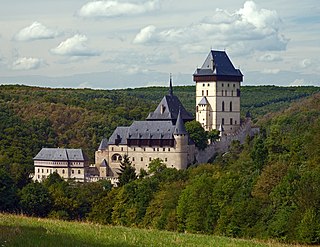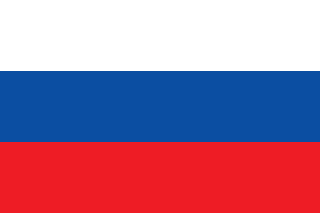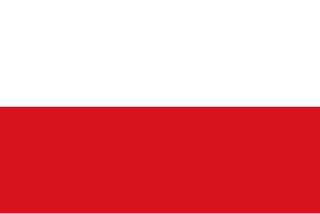| 1965 World Rhythmic Gymnastics Championships | |
|---|---|
| Location | |
| Start date | 3 December 1965 |
| End date | 4 December 1965 |
II Rhythmic Gymnastics World Championships were held in Prague, Czechoslovakia on 3 and 4 December 1965.
| 1965 World Rhythmic Gymnastics Championships | |
|---|---|
| Location | |
| Start date | 3 December 1965 |
| End date | 4 December 1965 |
II Rhythmic Gymnastics World Championships were held in Prague, Czechoslovakia on 3 and 4 December 1965.
There were 32 competitors from 12 countries - Soviet Union, Czechoslovakia, Bulgaria, German Democratic Republic, Federal Republic of Germany, Hungary, Poland, Yugoslavia, Finland, Cuba, Belgium & Austria.
Competitors competed in two events - freehand and with apparatus. Routines were marked out of 20.
| Rank | Nation | Gold | Silver | Bronze | Total |
|---|---|---|---|---|---|
| 1 | 2 | 1 | 2 | 5 | |
| 2 | 1 | 2 | 1 | 4 | |
| Totals (2 entries) | 3 | 3 | 3 | 9 | |
| Place | Name | Nation | Score |
|---|---|---|---|
| 1 | Tatiana Kravtchenko | | 18.632 |
| 2 | Hana Machatová-Bogušovská | | 18.600 |
| 3 | Hana Mičechová | | 18.566 |
| 4 | Jana Bérová | | 18.466 |
| = | Ludmila Savinkova | | 18.466 |
| 6 | Lilia Natmoutdinova | | 18.366 |
| Place | Name | Nation | Score |
|---|---|---|---|
| 1 | Hana Mičechová | | 18.933 |
| 2 | Tatiana Kravtchenko | | 18.733 |
| 3 | Lilia Natmoutdinova | | 18.699 |
| 4 | Jana Bérová | | 18.666 |
| 5 | Hana Machatová-Bogušovská | | 18.633 |
| 6 | Heide Reinsch | | 18.632 |
| Place | Name | Nation | Freehand | Apparatus | Total |
|---|---|---|---|---|---|
| 1 | Hana Mičechová | | 18.566 | 18.933 | 37.499 |
| 2 | Tatiana Kravtchenko | | 18.632 | 18.733 | 37.365 |
| 3 | Hana Machatová-Bogušovská | | 18.600 | 18.633 | 37.233 |
| 4 | Jana Bérová | | 18.466 | 18.666 | 37.132 |
| 5 | Lilia Natmoutdinova | | 18.366 | 18.699 | 37.065 |
| 6 | Maria Gigova | | 18.200 | 18.532 | 36.732 |
| 7 | Heide Reinsch | | 18.099 | 18.632 | 36.731 |
| 8 | Ute Lehmann | | 18.199 | 18.399 | 36.598 |
| 9 | Rumyana Stefanova | | 18.033 | 18.466 | 36.499 |
| 10 | Ludmila Savinkova | | 18.466 | 18.000 | 36.466 |
| 11 | Maren Klüssendorf | | 17.866 | 18.466 | 36.332 |
| 12 | Youlia Gantcheva | | 17.832 | 18.266 | 36.098 |
| 13 | Maria Patocska | | 18.032 | 17.932 | 35.964 |
| 14 | Maria Stryjecka | | 17.866 | 18.032 | 35.898 |
| 15 | Wieslawa Skowronek | | 17.766 | 17.700 | 35.466 |
| 16 | Ivana Obucina | | 17.666 | 17.700 | 35.366 |
| 17 | Ingrid Nicklas | | 17.933 | 17.333 | 35.266 |
| 18 | Ziwille Florowska | | 17.799 | 17.433 | 35.232 |
| = | Rauni Koskinen | | 17.866 | 17.366 | 35.232 |
| 20 | Elisabeth Rösel | | 17.232 | 17.999 | 35.231 |
| 21 | Judit Papp | | 17.566 | 17.566 | 35.132 |
| 22 | Tatiana Radovanovic | | 17.199 | 17.532 | 34.731 |
| 23 | Crista Del Pino | | 17.299 | 17.233 | 34.532 |
| 24 | Zsuzsa Vasady | | 16.899 | 17.399 | 34.298 |
| 25 | Liliane Steyaert | | 16.333 | 17.366 | 33.699 |
| 26 | Thais Albertini Hernandez | | 16.733 | 16.666 | 33.399 |
| 27 | Mirjana Vutohinitch | | 16.999 | 16.366 | 33.365 |
| 28 | Mirta Santacana | | 16.432 | 16.632 | 33.064 |
| 29 | Hilde Krumpholz | | 16.232 | 16.800 | 33.032 |
| 30 | Gerda Stacher | | 16.432 | 16.566 | 32.998 |
| 31 | Luthegarde Van Nuffel | | 16.333 | 32.566 | |
| 32 | Helga Schüller | | 15.933 | 16.332 | 32.265 |

Bohemia is the westernmost and largest historical region of the Czech Republic. Bohemia can also refer to a wider area consisting of the historical Lands of the Bohemian Crown ruled by the Bohemian kings, including Moravia and Czech Silesia, in which case the smaller region is referred to as Bohemia proper as a means of distinction.

Czechoslovakia was a landlocked state in Central Europe, created in 1918, when it declared its independence from Austria-Hungary. In 1938, after the Munich Agreement, the Sudetenland became part of Nazi Germany, while the country lost further territories to Hungary and Poland. Between 1939 and 1945, the state ceased to exist, as Slovakia proclaimed its independence and Carpathian Ruthenia became part of Hungary, while in the remainder of the Czech Lands, the German Protectorate of Bohemia and Moravia was proclaimed. In 1939, after the outbreak of World War II, former Czechoslovak President Edvard Beneš formed a government-in-exile and sought recognition from the Allies.

The Sudetenland is the historical German name for the northern, southern, and western areas of former Czechoslovakia which were inhabited primarily by Sudeten Germans. These German speakers had predominated in the border districts of Bohemia, Moravia, and Czech Silesia since the Middle Ages. Since the 9th century the Sudetenland had been an integral part of the Czech state both geographically and politically.

The Munich Agreement was an agreement concluded at Munich on 30 September 1938, by Nazi Germany, Great Britain, the French Republic, and Fascist Italy. The agreement provided for the German annexation of part of Czechoslovakia called the Sudetenland, where more than three million people, mainly ethnic Germans, lived. The pact is also known in some areas as the Munich Betrayal, because of a previous 1924 alliance agreement and a 1925 military pact between France and the Czechoslovak Republic.

The military occupation of Czechoslovakia by Nazi Germany began with the German annexation of the Sudetenland in 1938, continued with the creation of the Protectorate of Bohemia and Moravia, and by the end of 1944 extended to all parts of Czechoslovakia.
With the collapse of the Habsburg monarchy at the end of World War I, the independent country of Czechoslovakia was formed as a result of the critical intervention of U.S. President Woodrow Wilson, among others.

The Czechoslovakia national football team represented Czechoslovakia in men's international football from 1919 to 1993. The team was controlled by the Czechoslovak Football Association, and the team qualified for eight World Cups and three European Championships. It had two runner-up finishes in World Cups, in 1934 and 1962, and won the European Championship in the 1976 tournament.

The Czechoslovak Socialist Republic, known from 1948 to 1960 as the Czechoslovak Republic or Fourth Czechoslovak Republic, was the Czechoslovak state from 1948 until 1989, when the country was under communist rule, and was regarded as a satellite state in the Soviet sphere of interest.

The (First) Slovak Republic, otherwise known as the Slovak State, was a partially-recognized client state of Nazi Germany which existed between 14 March 1939 and 4 April 1945 after abandoning Czechoslovakia to be annexed by Germany. The Slovak part of Czechoslovakia declared independence with German support one day before the German occupation of Bohemia and Moravia. The majority of the territory of present-day Slovakia was under the control of the Slovak-Republic, without its current southern parts, which were ceded by Czechoslovakia to Hungary in 1938. It was the first time in history that Slovakia had been a formally independent state.
I World Rhythmic Gymnastics Championships were held in Budapest, Hungary on 7 and 8 December 1963.
Alpine Skiing at the 1976 Winter Olympics consisted of six alpine skiing events. Similar to the 1964 games, the men's downhill was held on Patscherkofel, the other five events at Axamer Lizum. The events began on 5 February and ended on 13 February 1976.

The Kingdom of Bohemia, an autonomous part of Austria-Hungary until 1918, competed at some of the early modern Olympic Games. The team made its debut at the 1900 Summer Olympics. After World War I, Bohemia became part of the new Czechoslovakia, and Bohemian athletes competed for Czechoslovakia at the Olympics. After the 1992 Summer Olympics and the dissolution of Czechoslovakia into the Czech Republic and Slovakia in 1993, Bohemian athletes competed for the Czech Republic at the Olympics. If these post-war appearances are counted, Bohemia has missed only three Olympics: the inaugural 1896 Summer Olympics, the 1904 Summer Olympics and as Czechoslovakia, the 1984 Summer Olympics which were boycotted by the USSR and its satellites.

The First Czechoslovak Republic, often colloquially referred to as the First Republic, was the first Czechoslovak state that existed from 1918 to 1938, a union of ethnic Czechs and Slovaks. The country was commonly called Czechoslovakia, a compound of Czech and Slovak; which gradually became the most widely used name for its successor states. It was composed of former territories of Austria-Hungary, inheriting different systems of administration from the formerly Austrian and Hungarian territories.

The expulsion of Germans from Czechoslovakia after World War II was part of a series of evacuations and deportations of Germans from Central and Eastern Europe during and after World War II.

The Czech Republic first participated at the Olympic Games as an independent nation in 1994, and has competed in every Summer Olympic Games and Winter Olympic Games since then. Prior to the dissolution of Czechoslovakia in 1993, Czech athletes had competed at the Olympics from 1920 to 1992 as Czechoslovakia and from 1900 to 1912 as Bohemia.

Czechoslovakia first participated at the Olympic Games in 1918, after having competed as Bohemia from 1900 to 1912. The nation sent athletes to compete in every Summer Olympic Games since then, except for the 1984 Games when they were part of the Soviet-led boycott of the 1984 Summer Olympics. Czechoslovakia has participated in every Winter Olympic Games since the inaugural Games of 1924.

The Second Czechoslovak Republic existed for 169 days, between 30 September 1938 and 15 March 1939. It was composed of Bohemia, Moravia, Silesia and the autonomous regions of Slovakia and Subcarpathian Rus', the latter being renamed Carpathian Ukraine on 30 December 1938.

On 20–21 August 1968, the Czechoslovak Socialist Republic was jointly invaded by four Warsaw Pact countries: the Soviet Union, the Polish People's Republic, the People's Republic of Bulgaria and the Hungarian People's Republic. The invasion stopped Alexander Dubček's Prague Spring liberalisation reforms and strengthened the authoritarian wing of the Communist Party of Czechoslovakia (KSČ).
The 11th Artistic Gymnastics World Championships were held in Prague, Czechoslovakia, in 1938.

The FIS Cross-Country World Cup is an annual cross-country skiing competition, arranged by the International Ski Federation (FIS) since 1981. The competition was arranged unofficially between 1973 and 1981, although it received provisional recognition on the 31st FIS Congress, 29–30 April 1977 in Bariloche, Argentina.